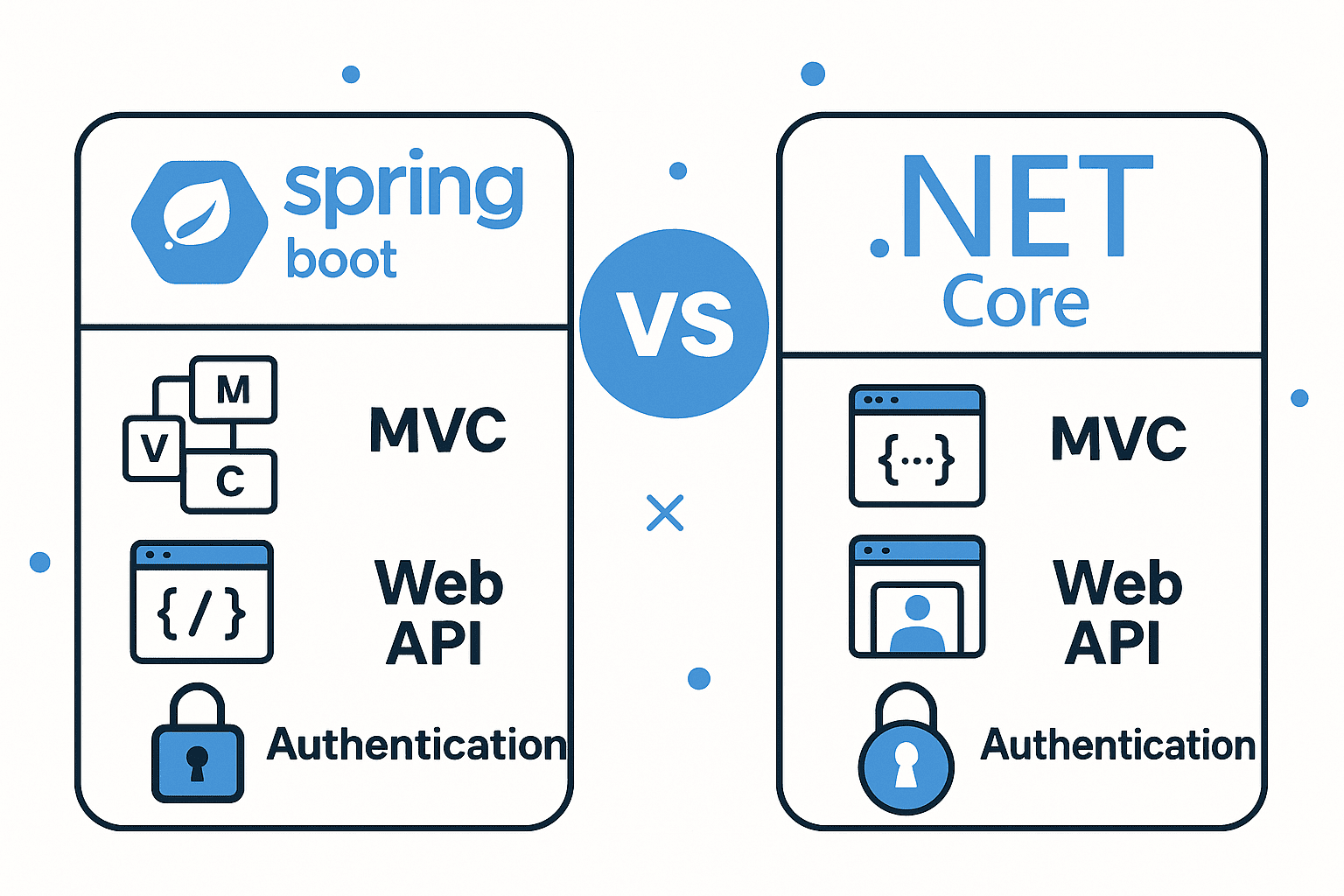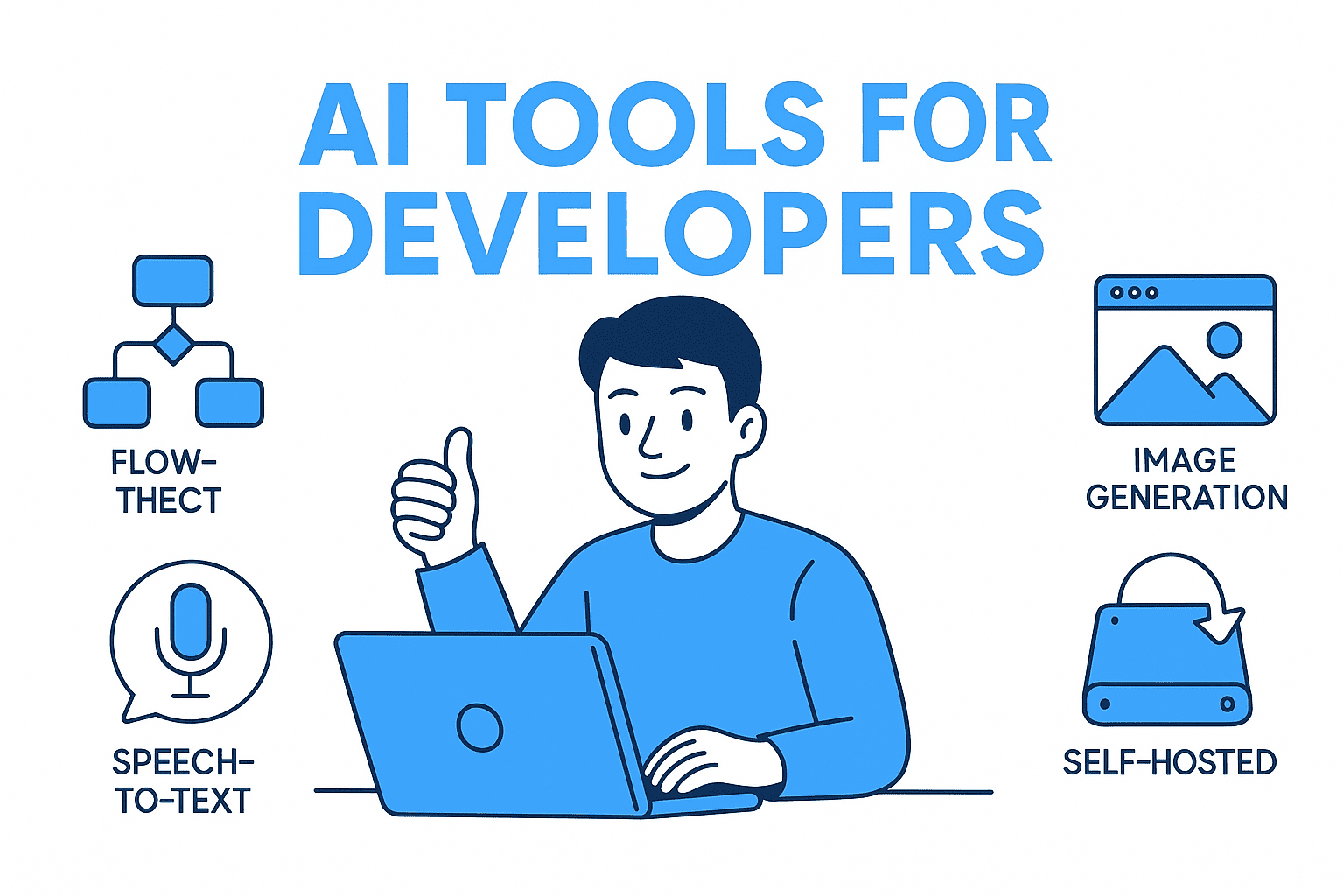Backend frameworks can feel like choosing between coffee and tea. Both work. Both have fans. But which one feels right for you?
If you're deciding between Spring Boot (Java) and .NET Core (C#), this guide will help you choose — especially when it comes to:
- MVC structure
- Web API development
- Authentication and authorization
Let’s break it down.
🧱 MVC Architecture: Who Builds It Better?
Spring Boot (Spring MVC)
Spring Boot follows the traditional Model-View-Controller pattern through Spring MVC.
- Controllers use
@Controlleror@RestController - Models are just Java classes (POJOs)
- Views can be JSP, Thymeleaf, or decoupled frontends
Pros:
- Mature and very customizable
- Strong support for layered architecture
- Great with complex enterprise apps
Cons:
- More verbose
- Steeper learning curve for beginners
Common Use in MENA Projects:
Spring Boot is often used in large fintech or telecom systems across the Gulf and North Africa — where complex domain logic is needed.
.NET Core (ASP.NET Core MVC)
.NET Core uses a lightweight, fast MVC system.
- Controllers inherit from
ControllerorControllerBase - Views are Razor Pages or use Blazor/SPAs
- Clean structure with great defaults
Pros:
- Faster to set up
- Async-first
- Razor is tightly integrated
Cons:
- Razor feels limiting for some frontend-heavy apps
Popular in the MENA Region:
Widely used in government portals and ERP dashboards, especially in UAE, Saudi Arabia, and Egypt.
🔌 Web API Development
Spring Boot APIs
- Use
@RestControllerto send JSON - Built-in support for request/response mapping
- Can integrate easily with Spring Data JPA
@RestController
@RequestMapping("/api/products")
public class ProductController {
@GetMapping
public List<Product> getAll() {
return service.findAll();
}
}
Tools: Jackson, Springdoc, Postman-friendly responses.
⸻
.NET Core Web APIs • Uses ControllerBase with [ApiController] • Automatically serializes to JSON • Swagger support is built-in via NuGet
[ApiController]
[Route("api/[controller]")]
public class ProductsController : ControllerBase {
[HttpGet]
public async Task<IEnumerable<Product>> Get() {
return await _service.GetAllAsync();
}
}
Tools: Swashbuckle, NSwag, Azure support out of the box.
⸻
Quick Comparison
Feature Spring Boot .NET Core Default JSON Engine Jackson System.Text.Json Swagger Support Manual (Springdoc) Built-in (NuGet) API Versioning Custom setup Built-in attributes Dev Speed Slower at first Fast to prototype
⸻
🔐 Authentication & Authorization
Security is where many devs struggle. So how do the two compare?
Spring Boot Security • Powerful but complex • Supports JWT, OAuth2, LDAP, SAML, and more • Annotations like @PreAuthorize, @Secured
Flow: 1. Add spring-security dependency 2. Set up filter for JWT or form login 3. Annotate your controllers for access control
Example MENA Use Case: Banks in Bahrain or Kuwait use Spring Security with LDAP for secure employee dashboards.
⸻
.NET Core Identity & Auth • Developer-friendly • Built-in support for user roles, claims, tokens • Easily adds social login (Google, Facebook, Microsoft)
Flow: 1. Use ASP.NET Core Identity with EF Core 2. Add [Authorize] on endpoints 3. Define roles and policies
[Authorize(Roles = "Admin")]
public IActionResult GetSecureData() {
return Ok("Sensitive Info");
}
Popular Use: Startups and SMEs across the MENA region use .NET Identity for user auth — without hiring a dedicated security team.
⸻
🌍 Regional Considerations (MENA & Gulf)
Requirement Spring Boot .NET Core Arabic language support Requires setup Good out of the box Right-to-left (RTL) UI support Depends on frontend Easy with Blazor/Razor Azure cloud integration Manual setup Seamless Government compliance Highly customizable Easier with Microsoft stack
⸻
🧠 Final Thoughts: Which One Should You Choose?
Scenario Recommended Framework Large enterprise project Spring Boot Fast API-driven MVP .NET Core Working in Java ecosystem Spring Boot Azure or Microsoft ecosystem .NET Core Need ready-made Identity/auth UI .NET Core Need complete control over auth flow Spring Boot Backend for mobile app (React Native/Flutter) Both work well
⸻
✅ Conclusion
Both Spring Boot and .NET Core are powerful for modern backend development. But their strengths are different: • Spring Boot is flexible and built for enterprise complexity. • .NET Core is lean, modern, and perfect for quick web/API projects.
In the MENA region, your decision may also depend on team background, infrastructure, and cloud provider preference.
The best advice? Pick the tool your team can move fastest with — and that fits your long-term vision.
⸻
Got questions? Building a SaaS, startup, or enterprise app in the region? Reach out — I’m happy to help you choose the right stack for your project.
🚀 Let’s build something amazing! If you have a project in mind or need help with your next design system, feel free to reach out.
📧 Email: safi.abdulkader@gmail.com | 💻 LinkedIn: @abdulkader-safi | 📱 Instagram: @abdulkader.safi | 🏢 DSRPT
Drop me a line, I’m always happy to collaborate! 🚀



